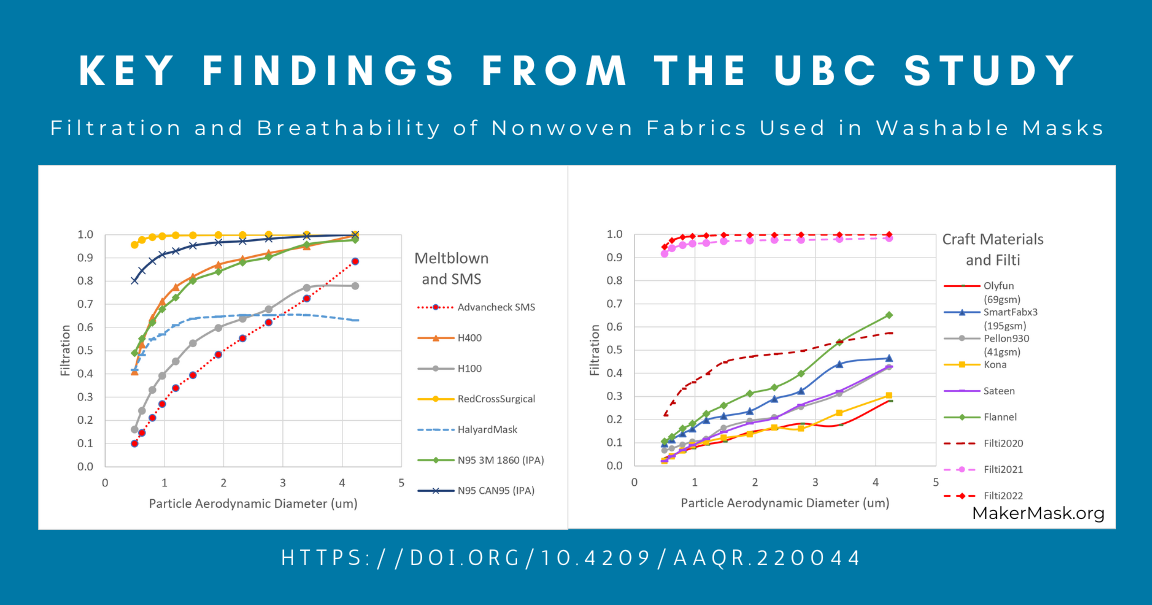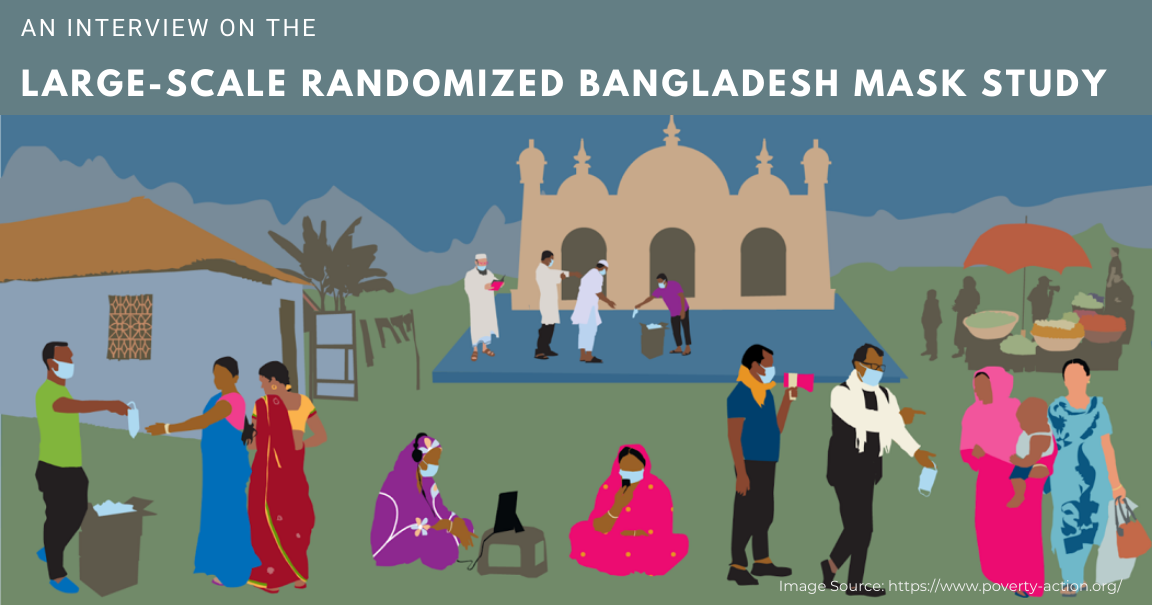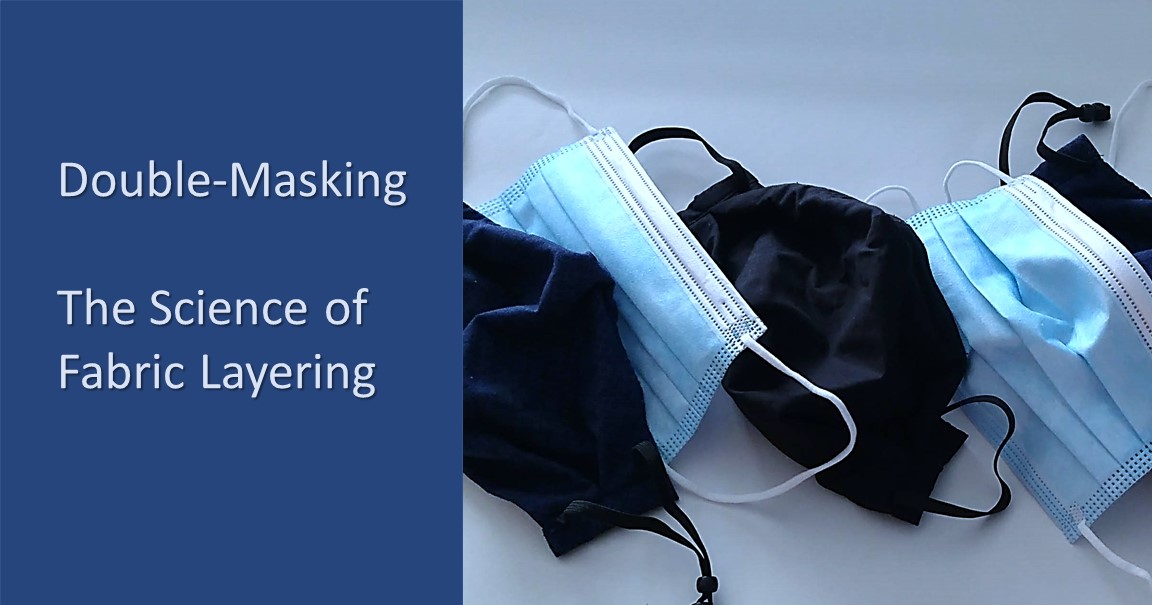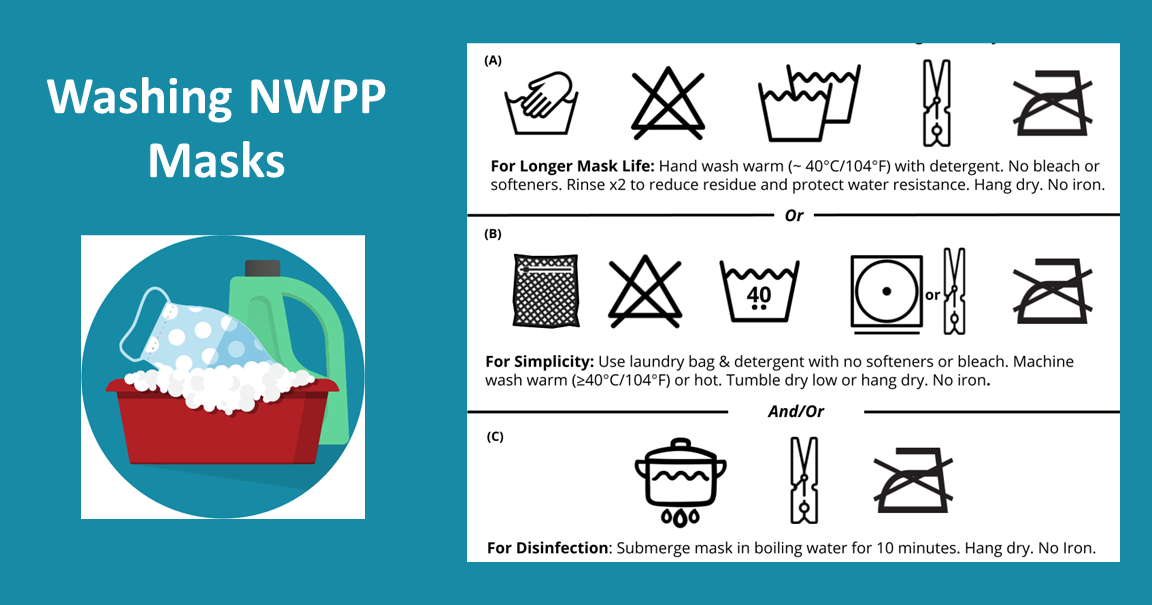MakerMask collaborated with the Energy and Aerosols Laboratory at the University of British Columbia (UBC) to explore filtration and breathability of nonwoven and woven fabrics for reusable masks before and after washing. This post summarizes the key findings. See the paper for details: https://doi.org/10.4209/aaqr.220044 Motivation Although mask mandates have been rescinded, washable masks remain widely […]
The Spectrum of Masks: Exploring Mask Options
Two years into the COVID-19 pandemic, a wide variety of mask options are available. How do they compare? Figure 1 shows masks arranged into a spectrum, roughly in order of their filtration efficiency. Different masks serve different tasks. A mask can function as source control (my mask protects you) and/or personal protective equipment (PPE) (my […]
An Interview on the Large-Scale Randomized Bangladesh Mask Study
Is community mask-wearing effective in reducing the spread of SARS-CoV-2? Numerous observational, epidemiology, laboratory, and modeling studies have suggested that masks work. The results of these studies are now supported by the first massive randomized controlled trial, the gold standard in medical research, conducted in the real world. In this post, one of the principal […]
Making Sense of FDA Mask Designations
Shopping for a high-performing mask is a daunting task and claims of FDA approval would certainly make life easier but, spoiler alert, there’s no such thing as “FDA-approved” masks! There are however a number of FDA hoops that manufacturers can jump through to indicate some degree of quality and performance. The goal of this post […]
Double-Masking and the Science of Fabric Layering
In the spring of 2021 the CDC published advice on double-masking which was based on the results of a study published in February of this year. Although some people that have been fully vaccinated are wearing masks less frequently (per the CDC guidance published in May), there are many instances where mask use is still […]
Fabric Mask Material Testing Results! ASTM 2100 and F3502
A huge thank you to everyone that has contributed to our fabric mask material testing campaign! The results from the testing campaign are finally in. We tested two different 3-layer fabric combinations to establish baseline performance for fluid resistance, breathability, bacterial filtration efficiency (~3um particles), and submicron particle efficiency (~0.3um). These tests focused on two […]
Masks for COVID: Literature Highlights
In this post we share some of our favorite articles about mask science. Since the beginning of this pandemic over 6000 papers have been published on masks. For scientists and sewists alike, sorting through all this information can be daunting! We have gathered our top recommendations for those looking to join us in immersing themselves […]
Washing Fabric Masks: Knowns and Unknowns
Recently, we’ve been hearing a lot of questions about washing and reusing fabric masks. There are a wide range of “best practices” emerging from government organizations, sewist groups, and journalists. This post discusses cleaning of masks containing spunbond non-woven polypropylene (NWPP) layers, and clarifies some distinctions between washing and disinfection. Introduction First, a caveat — […]
New ASTM Standard for Face Coverings: ASTM F3502
Since February of 2020, we’ve been asking for standards for masks/face coverings used by our communities. Finally, the American Society for Testing and Materials (ASTM) has established a national standard for “Barrier Face Coverings” (ASTM F3502) that are neither medical masks according to ASTM F2100 standards nor respirators according to NIOSH standards. This new standard […]
Improving Mask Fit and Seal
As the pandemic progresses, more attention is being paid to incorporating design features that improve mask fit. To maximize the benefits of these design features, masks need to be put on (donned) and taken off (doffed) using techniques that people outside of the healthcare industries may not be as familiar with. In this post we […]











